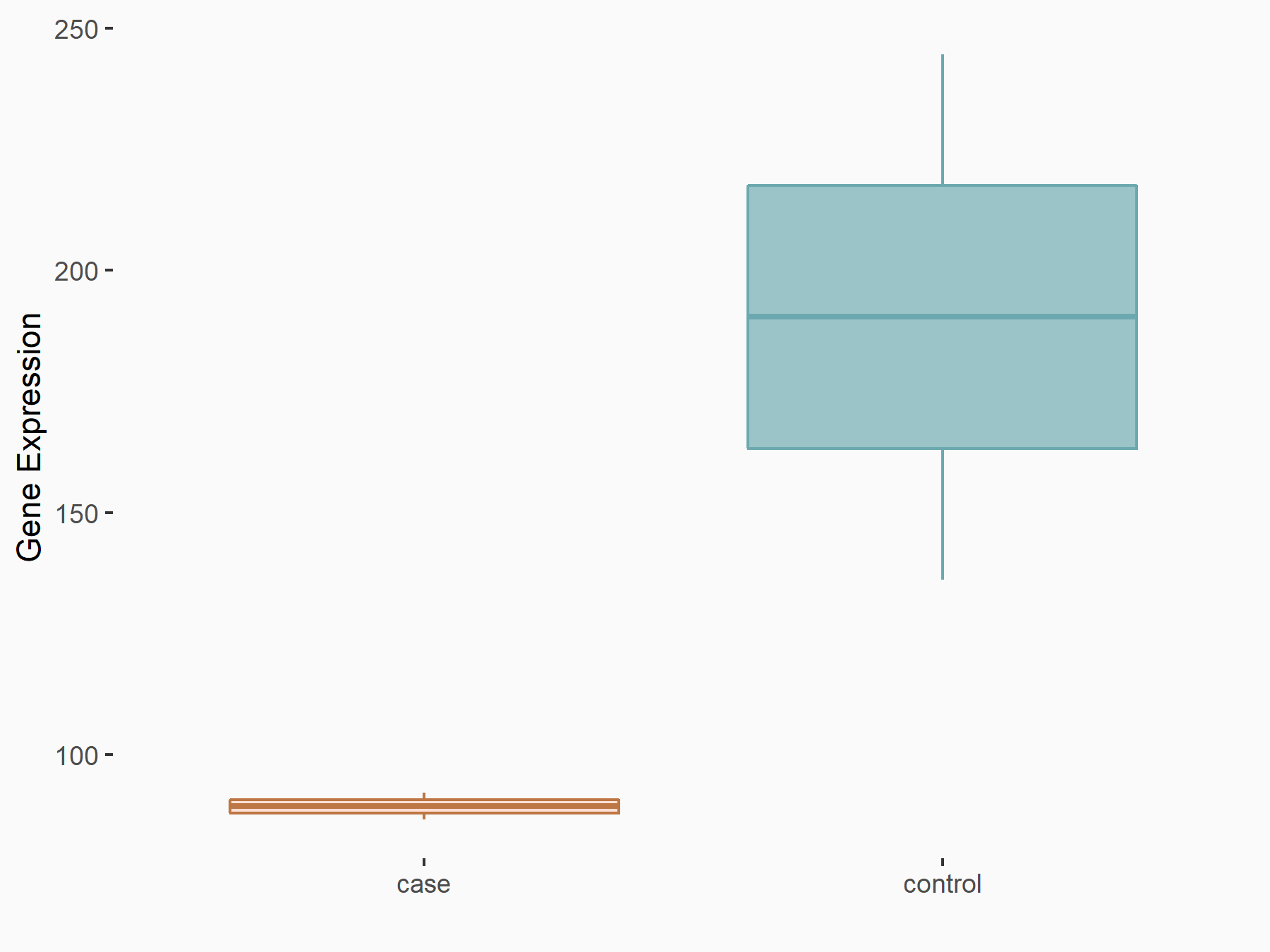m6A Target Gene Information
General Information of the m6A Target Gene (ID: M6ATAR00345)
Full List of m6A Methylation Regulator of This Target Gene and Corresponding Disease/Drug Response(s)
NME1
can be regulated by the following regulator(s), and cause disease/drug response(s). You can browse detail information of regulator(s) or disease/drug response(s).
Browse Regulator
Browse Disease
Browse Drug
RNA demethylase ALKBH5 (ALKBH5) [ERASER]
| Representative RNA-seq result indicating the expression of this target gene regulated by ALKBH5 | ||
| Cell Line | 143B cell line | Homo sapiens |
|
Treatment: siALKBH5 transfected 143B cells
Control: siControl 143B cells
|
GSE154528 | |
| Regulation |
  |
logFC: -1.09E+00 p-value: 4.52E-03 |
| More Results | Click to View More RNA-seq Results | |
| In total 1 item(s) under this regulator | ||||
| Experiment 1 Reporting the m6A Methylation Regulator of This Target Gene | [1] | |||
| Response Summary | ALKBH5 knockdown, was able to inhibit malignant behavior of lung adenocarcinoma by regulating RMRP expression via demethylation. RMRP and ALKBH5 therefore represent promising therapeutic targets for lung adenocarcinoma. | |||
| Target Regulation | Up regulation | |||
| Responsed Disease | Lung adenocarcinoma | ICD-11: 2C25.0 | ||
| Cell Process | Cell proliferation | |||
| Cell migration | ||||
| Cell invasion | ||||
| Cell apoptosis | ||||
| In-vitro Model | A-549 | Lung adenocarcinoma | Homo sapiens | CVCL_0023 |
| BEAS-2B | Normal | Homo sapiens | CVCL_0168 | |
| NCI-H1299 | Lung large cell carcinoma | Homo sapiens | CVCL_0060 | |
| NCI-H460 | Lung large cell carcinoma | Homo sapiens | CVCL_0459 | |
| XWLC-05 | Lung adenocarcinoma | Homo sapiens | CVCL_IQ71 | |
| In-vivo Model | The mice were maintained in cages under standard environmental conditions (temperature 25 ± 2 ℃, humidity 55 ± 5% and 12-h light/12-h dark cycle) and given free access to food and tap water. All mice were randomly divided into three groups with 6 in each group. To establish xenograft model, A549 cells (1 × 107) transfected with si-control (si-NC), si-ALKBH5 or si-ALKBH5 + RMRP were injected subcutaneously into a single side of the armpit of each mouse. | |||
Lung cancer [ICD-11: 2C25]
| In total 2 item(s) under this disease | ||||
| Experiment 1 Reporting the m6A-centered Disease Response | [] | |||
| Response Summary | m6A RNA methylation-mediated RMRP stability renders proliferation and progression of non-small cell lung cancer through regulating TGFBR1/SMAD2/SMAD3 pathway. RMRP promoted the cancer stem cells properties and epithelial mesenchymal transition, which promote the resistance to radiation therapy and cisplatin. | |||
| Responsed Disease | Non-small-cell lung carcinoma [ICD-11: 2C25.Y] | |||
| Responsed Drug | Cisplatin | Approved | ||
| Pathway Response | Signaling pathways regulating pluripotency of stem cells | hsa04550 | ||
| EGFR tyrosine kinase inhibitor resistance | hsa01521 | |||
| Cell Process | Epithelial mesenchymal transition | |||
| Experiment 2 Reporting the m6A-centered Disease Response | [1] | |||
| Response Summary | ALKBH5 knockdown, was able to inhibit malignant behavior of lung adenocarcinoma by regulating RMRP expression via demethylation. RMRP and ALKBH5 therefore represent promising therapeutic targets for lung adenocarcinoma. | |||
| Responsed Disease | Lung adenocarcinoma [ICD-11: 2C25.0] | |||
| Target Regulator | RNA demethylase ALKBH5 (ALKBH5) | ERASER | ||
| Target Regulation | Up regulation | |||
| Cell Process | Cell proliferation | |||
| Cell migration | ||||
| Cell invasion | ||||
| Cell apoptosis | ||||
| In-vitro Model | A-549 | Lung adenocarcinoma | Homo sapiens | CVCL_0023 |
| BEAS-2B | Normal | Homo sapiens | CVCL_0168 | |
| NCI-H1299 | Lung large cell carcinoma | Homo sapiens | CVCL_0060 | |
| NCI-H460 | Lung large cell carcinoma | Homo sapiens | CVCL_0459 | |
| XWLC-05 | Lung adenocarcinoma | Homo sapiens | CVCL_IQ71 | |
| In-vivo Model | The mice were maintained in cages under standard environmental conditions (temperature 25 ± 2 ℃, humidity 55 ± 5% and 12-h light/12-h dark cycle) and given free access to food and tap water. All mice were randomly divided into three groups with 6 in each group. To establish xenograft model, A549 cells (1 × 107) transfected with si-control (si-NC), si-ALKBH5 or si-ALKBH5 + RMRP were injected subcutaneously into a single side of the armpit of each mouse. | |||
Cisplatin
[Approved]